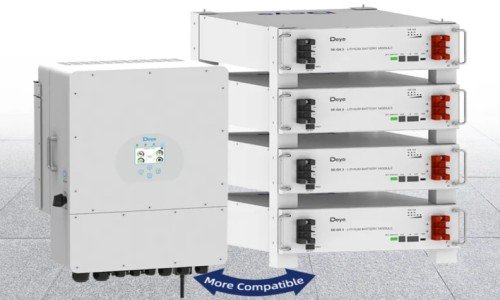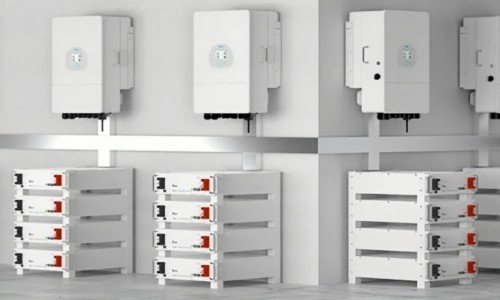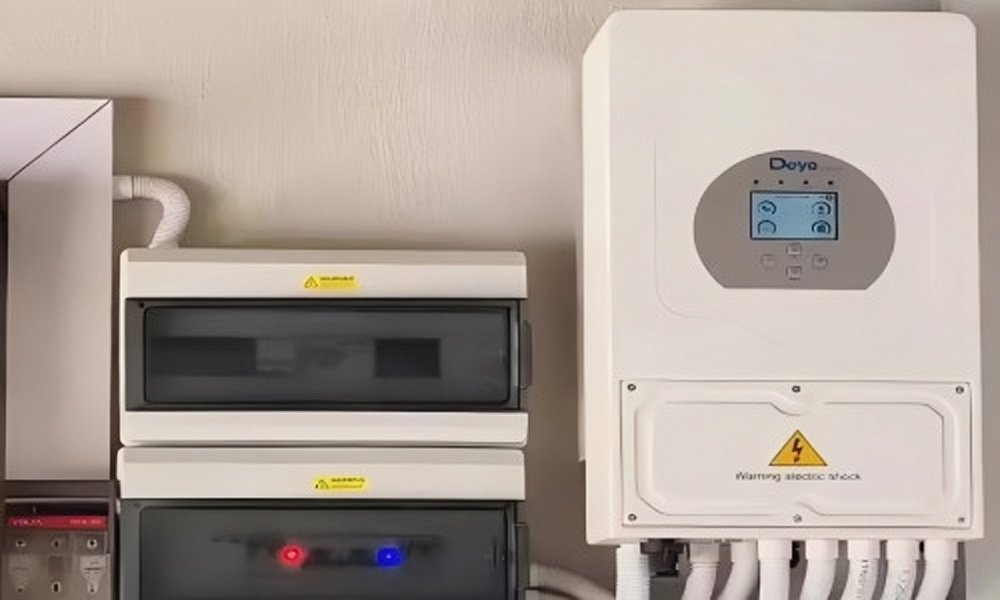When it comes to energy storage inverters, Deye and Sungrow are two of the leading brands in the market, offering advanced technology and efficient performance. Deciding between them can be challenging, especially since both offer excellent products with distinct advantages. In this article, we will compare Deye and Sungrow in terms of energy storage capabilities, system integration, cost-effectiveness, and after-sales service to help you choose the best option for your needs.
Both Deye and Sungrow are well-established in the solar industry, but which one is best for your energy storage needs? Let’s dive into a detailed comparison.
Table of Contents
- What Are the Key Differences in Energy Storage Capabilities?
- How Do Deye and Sungrow Compare in System Integration?
- Which Brand Offers Better Cost-Effectiveness for Energy Storage?
- What Is the Reliability of Deye and Sungrow’s After-Sales Service?
What Are the Key Differences in Energy Storage Capabilities?
Energy storage capability is a crucial factor when choosing an inverter, as it directly affects the amount of energy that can be stored and utilized by your system. Deye and Sungrow offer different technologies and features, so understanding their energy storage capabilities will help you make an informed decision.
Both brands provide strong energy storage solutions, but there are key differences in their capacity, battery compatibility, and performance. Let’s explore these differences.

Inverter and battery compatibility
Deye vs Sungrow: Energy Storage Capabilities Comparison
| Feature | Deye Inverter (SUN-3.6/5/6K-SG03LP1-EU) | Sungrow Inverter (SH5K-S) |
|---|---|---|
| Battery Compatibility | Lithium-based batteries | Lithium-based batteries |
| Max Battery Capacity | 6kW – 10kW | 6kW |
| Efficiency | 98.4% | 98% |
| Energy Storage Duration | Flexible based on battery size | Flexible based on battery size |
| Peak Power Output | 6kW | 5kW |
| Integrated Energy Storage | Yes | Yes |
-
Battery Compatibility:
- Deye: Deye inverters are compatible with a wide range of batteries, including lithium-based batteries1, giving you flexibility in choosing the right energy storage solution.
- Sungrow: Sungrow also supports lithium-based batteries, with their products being highly compatible with these technologies, ensuring long-term reliability.
-
Max Battery Capacity:
- Deye: Deye offers higher flexibility in terms of max battery capacity, providing up to 10kW with some models, making it suitable for larger residential or small commercial applications.
- Sungrow: Sungrow typically offers a max capacity of 6kW, which is ideal for smaller residential systems but may require additional inverters for larger setups.
-
Efficiency:
- Deye: Deye inverters boast a slightly higher efficiency (98.4%) compared to Sungrow’s 98%. This small difference in efficiency can contribute to higher overall energy savings over time.
Conclusion: Both Deye and Sungrow offer strong energy storage capabilities, with Deye providing higher peak power output and flexibility in battery capacity. However, Sungrow offers competitive efficiency and battery compatibility.
How Do Deye and Sungrow Compare in System Integration?
System integration refers to how well the inverter works with other components, such as solar panels, batteries, and monitoring systems. A seamless integration process ensures that your energy system operates efficiently and optimally.
When choosing an inverter, system integration is critical for ensuring smooth operation and scalability. Let’s compare how Deye and Sungrow perform in terms of system integration.

Solar energy system setup
Deye vs Sungrow: System Integration
-
Deye:
- Deye inverters are designed to integrate seamlessly with a variety of solar panels and batteries, including both LiFePO4 batteries2 and LFP batteries3. Deye’s flexible integration options allow it to be used in both residential and small commercial setups, with no need for specialized equipment.
- The inverter also features advanced smart monitoring capabilities, which allow users to track system performance in real-time via a mobile app or web interface.
-
Sungrow:
- Sungrow’s inverters are known for their compatibility with the company's FusionSolar4 smart monitoring platform, which allows seamless integration with Sungrow solar panels and batteries. This smart system optimizes energy consumption and helps monitor performance remotely.
- Sungrow’s platform is also designed for both residential and commercial systems, but it works best with Sungrow's own components, which might limit compatibility with third-party products.
Conclusion: Deye offers broader compatibility with various solar and battery components, while Sungrow provides a more integrated experience with its own FusionSolar platform. If you prefer a system that can easily integrate with third-party components, Deye might be the better choice.
Which Brand Offers Better Cost-Effectiveness for Energy Storage?
Cost-effectiveness is always an important factor when selecting an inverter, especially when considering the total investment over the system’s lifespan. In this section, we’ll compare the cost-effectiveness of Deye and Sungrow inverters.
Cost-effectiveness is determined by initial price, efficiency, payback period, and long-term savings. Let’s compare the financial advantages of each brand.

Deye inverter installation
Deye vs Sungrow: Cost-Effectiveness Comparison
| Inverter Model | Deye SUN-3.6/5/6K-SG03LP1-EU | Sungrow SH5K-S |
|---|---|---|
| Initial Price | $1,200 – $1,500 | $1,300 – $1,600 |
| Efficiency | 98.4% | 98% |
| Payback Period | 5–6 years | 4–5 years |
| Warranty | 5–10 years | 5 years |
| Annual Energy Savings | 4,000 – 6,000 kWh | 3,800 – 5,500 kWh |
-
Initial Price:
- Deye: Deye inverters are typically priced between $1,200 and $1,500, offering a good balance between quality and affordability. The lower upfront cost compared to Sungrow can make it a more attractive option for those on a budget.
- Sungrow: Sungrow inverters are priced slightly higher, ranging from $1,300 to $1,600. The extra cost reflects their advanced features and the integration with Sungrow's smart monitoring system5.
-
Payback Period:
- Deye: With Deye's slightly lower cost and good efficiency, the payback period typically falls between 5 to 6 years, depending on the local energy rates and system size.
- Sungrow: Sungrow inverters provide a slightly shorter payback period of 4 to 5 years, owing to the high efficiency and integration with its advanced monitoring system6.
Conclusion: Deye offers a more cost-effective initial investment, with a longer payback period due to higher upfront savings. Sungrow’s slightly higher cost is balanced by a shorter payback period and additional smart features.
What Is the Reliability of Deye and Sungrow’s After-Sales Service?
After-sales service is an essential consideration, especially when investing in an inverter for long-term energy production. A reliable after-sales service ensures that any issues can be addressed quickly, minimizing downtime and reducing repair costs.
Reliability of after-sales service is critical for peace of mind and ongoing system performance. Let’s compare the after-sales support provided by Deye and Sungrow.

Sungrow inverter
Deye vs Sungrow: After-Sales Support
-
Deye Support:
- Deye provides a comprehensive warranty7 of 5 to 10 years on most of its inverters. They also offer responsive technical support through their network of authorized service centers and online platforms. Deye's remote monitoring system allows users to troubleshoot and resolve issues quickly, ensuring minimal downtime.
- Deye also offers customer service in multiple languages, making it accessible to a global customer base.
-
Sungrow Support:
- Sungrow is known for its reliable after-sales service, providing a 5-year warranty on its inverters. They offer support through a global network of service centers, with fast response times for repairs and replacement parts.
- The FusionSolar platform also helps in diagnosing issues remotely, ensuring that problems are detected and addressed proactively.
Conclusion:
Both Deye and Sungrow provide reliable after-sales support. However, Sungrow’s FusionSolar platform and proactive diagnostics provide an edge in ensuring faster response times and resolution of issues.
Conclusion
Choosing between Deye and Sungrow for energy storage inverters ultimately depends on your specific needs. If you are looking for a more affordable inverter with broader compatibility and higher energy storage capacity, Deye is a great option. On the other hand, if you want a more integrated solution with advanced monitoring and a shorter payback period, Sungrow may be the better choice.
Consider factors such as system integration, cost, efficiency, and after-sales support to select the inverter that best meets your long-term energy goals.
-
Explanation of lithium-based batteries: These batteries are commonly used in solar systems for energy storage due to their long lifespan and high efficiency. The term encompasses various types of lithium-based chemistries, which are vital for understanding the storage solutions provided by both Deye and Sungrow. ↩
-
Explanation for LiFePO4 and LFP battery compatibility. ↩
-
Explanation for LiFePO4 and LFP battery compatibility. ↩
-
Explanation for the FusionSolar smart monitoring platform by Sungrow. ↩
-
Explanation for the source regarding the smart monitoring system integration with Sungrow inverters. ↩
-
Explanation for the source regarding the advanced monitoring system integration with Sungrow inverters. ↩
-
Deye offers a standard warranty of 5 to 10 years for most of its inverters, providing assurance for long-term system performance. ↩



